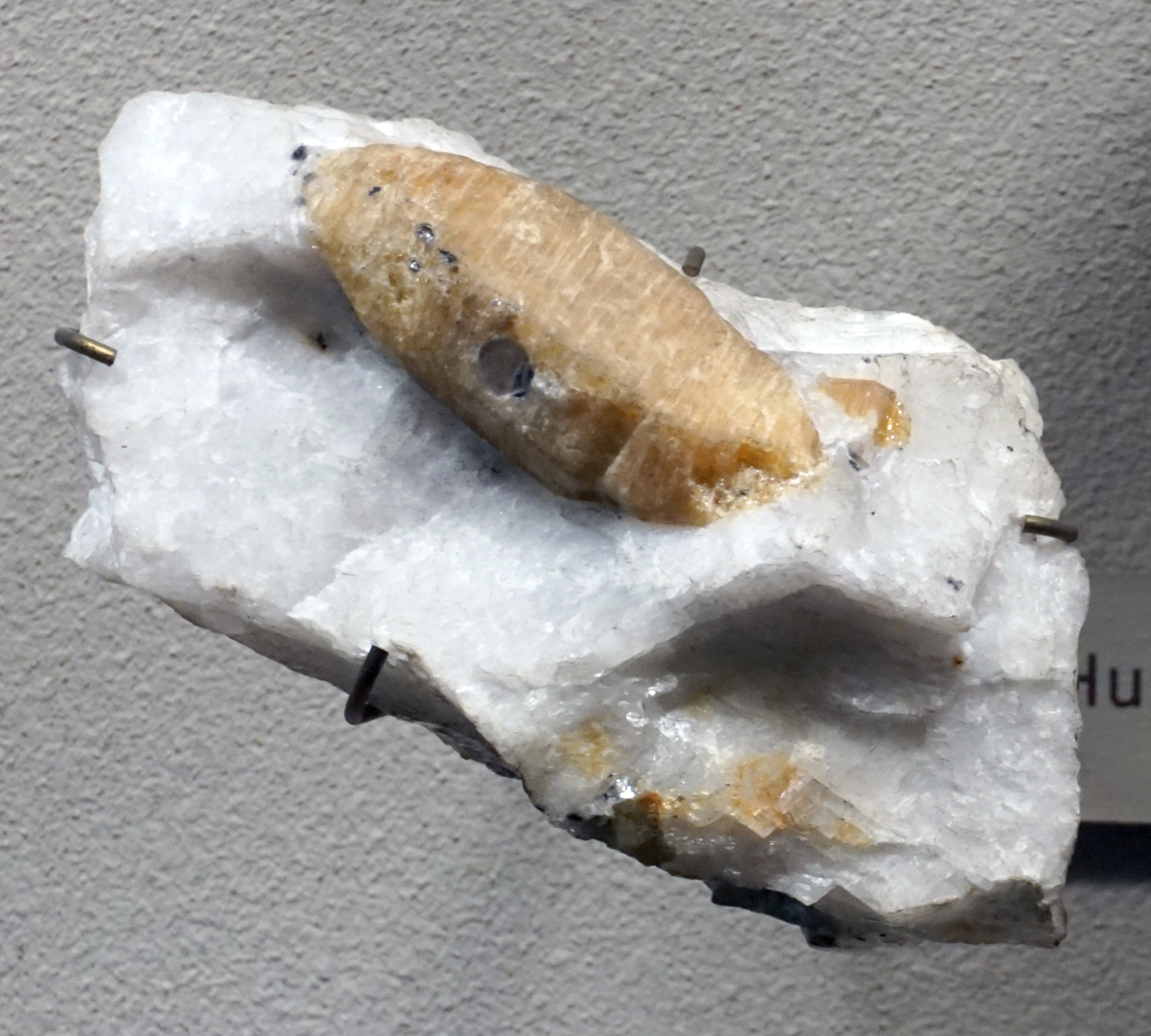The Mineral humite

Humite is the namesake mineral of the
humite group. The name can be used to describe the
humite group, or the individual member Humite. Humite is very similar structurally to
Chondrodite and
Clinohumite, but forms in a different
chemical structure than those minerals. Humite was named in 1813 in honor of Sir Abraham Hume (1749-1838), English connoisseur and collector.
Chemical Formula
(Mg,Fe2+)7(SiO4)3(F,OH)2
Color
Brown, reddish-brown, amber, yellow, grayish-yellow, orange
Crystal System
Orthorhombic
Crystal Habits
Forms as small tabular and prismatic crystals that are often rounded. Most commonly in embedded grains. Crystals may be striated.
Noteworthy Localities
Humite is an uncommon mineral, with only few localities producing collector specimens. The most well-known locality is the type locality of Monte Somma, Vesuvius, Italy, which has produced highly transparent microcrystals that are often light in color. In the U.S., Humite has come from the Tilly Foster Mine, Brewster, Putnam Co., New York; and from Franklin, Sussex Co., New Jersey, though it may be mistaken for Chondrodite at these locations.